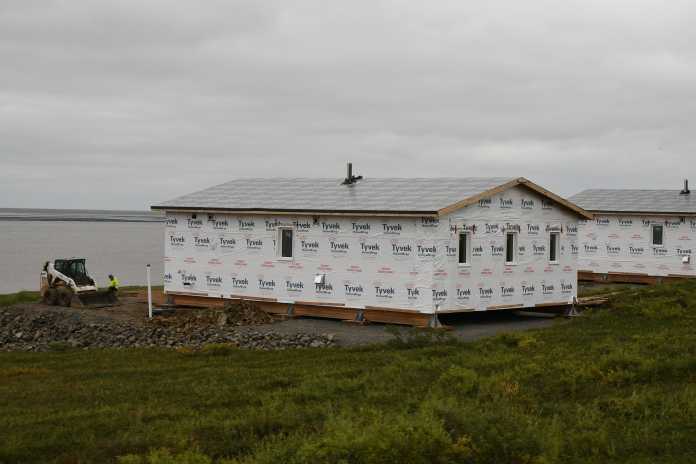At the very top of Google News search results today for “climate change” is a story by The Guardian claiming global warming is to blame for an eroding riverbank that is forcing the entire population of Newtok, Alaska, to abandon their homes and businesses. However, objective data show the riverbank began eroding at least as far back as the 1950s, when Alaska and the rest of the planet were in the middle of a global cooling period. Moreover, objective data show the rate of riverbank erosion has slowed down in recent years as the Earth modestly warmed. The scientific evidence, therefore, clearly contradicts The Guardian’s claim that global warming is causing the population of Newtok to flee to nearby Mertarvik as climate refugees.
The Guardian article, titled “‘It was sad to leave’: Climate crisis splits Alaskan town in half,” claims people fleeing Newtok to nearby Mertarvik comprise “one of the U.S.’s first communities of climate transplants.” The article tells heart-wrenching stories of Native Alaskans leaving their Newtok family homesteads. The article, however, fails to mention that the small village of 400 people was first settled in 1949 along the banks of the Newtock and Ninglick rivers and residents quickly became concerned about riverbank erosion.
According to a 2004 report by the U.S. Army Corps of Engineers, the average erosion rate of the Newtock River from 1957 to 2003 was approximately 71 feet per year. The Army Corps calculated that, “based on the erosion rates and the location of major utilities and infrastructure, the community will be a complete loss in 10 to 15 years [between 2014 and 2019].”
Nevertheless, in 2021 the town of Newtok still exists. It has taken the river until 2021 to erode as much land as the Army Corps – based on historic erosion rates – expected to be eroded by 2017. If climate change is having any impact on riverbank erosion rates, therefore, climate change appears to be slowing down – not speeding up – Newtok’s riverbank erosion.
The idea that global warming is in any significant way to blame for Newtok’s riverbank erosion is itself quite a stretch. The village of Newtok was built on the erosion-prone far bank of the crescent-shaped Newtok River. As anybody living along crescent-shaped portions of the Missouri and Mississippi Rivers can tell you, river erosion accentuates the crescent-shaped portions of rivers, cutting under the land and any structures or landscape features along the far bank of the crescent. This process has been documented for hundreds and thousands of years, long before people built coal-fired power plants. Newtok was built on just such an erosion-prone riverbank.
In short, erosion of crescent-shaped riverbanks has always been a geologic feature of rivers. There is no indication that global warming has any significant impact on riverbank erosion rates. To the extent that scientists have measured erosion rates along the riverbank of the Newtok River, erosion has slowed down – not sped up – in recent years as the Earth modestly warms. Therefore, claims that global warming is causing the loss of the village of Newtock and creating climate refugees is nonsensical and contradicted by objective facts and evidence.
















